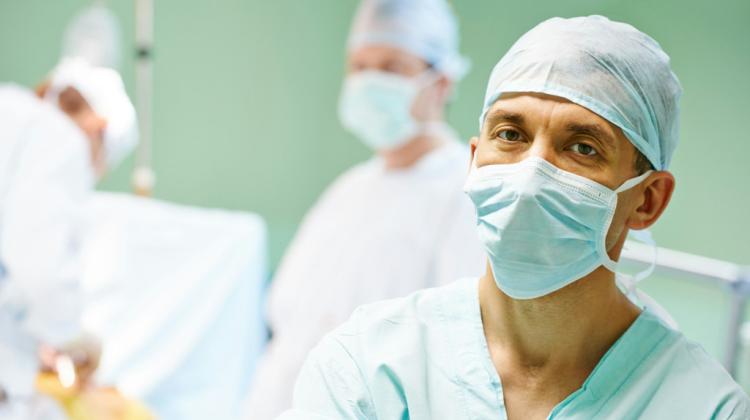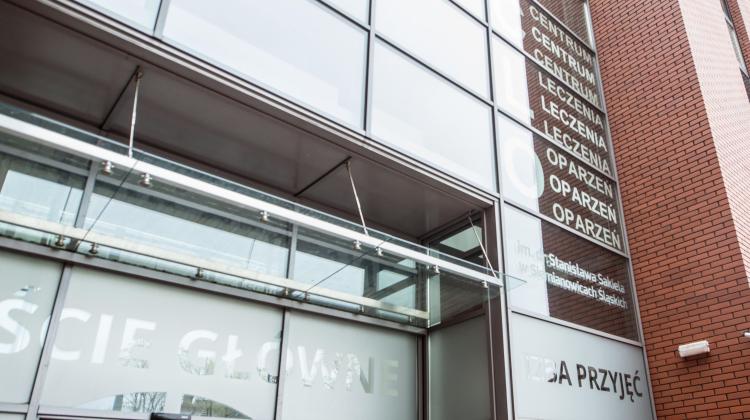Innovations in the treatment of burns

Doctors - specialists in the treatment of burns, together with chemical engineers and biologists conduct interdisciplinary research on polymers, which could help in the treatment of people with burns or chronic wounds. They are searching for so-called skin substitutes.
"According to doctors, burns and hard to heal wounds are a serious medical and social problem. Every few minutes in Europe surgeons amputate a foot because of non-healing diabetic wounds. Burns constitute severe damage to the skin, accompanied by stress. Treatment procedure involves converting a burn into surgical wound by surgically removing burned, destroyed cells. Later, skin has to be replenished, without this recovery is not possible. And it need to be done quickly" - said Prof. Andrzej Dworak, director of the Centre of Polymer and Carbon Materials PAS in Gliwice.
The Centre of Polymer and Carbon Materials coordinates the project "Thermally controlled biocompatible polymers as skin substitutes for the treatment of burns and wounds". Also involved in the work are the Burn Treatment Center in Siemianowice Śląskie, Łódź University of Technology and the Medical University of Silesia in Katowice.
This project is not about searching for better dressing materials, but rather a new therapeutic approach. Prof. Dworak told PAP that various methods to treat burns are used in medical practice. Foreign dressings can be used, for example, from porcine skin, but after some time they have to be removed. Frequent replacement of dressings not only causes pain, it does not always lead to good therapeutic results. Patient\'s own skin graft is optimal, but this means two wounds instead of single wound, because the skin graft must be obtained somehow. This is why methods of the future are associated with culturing cells.
Several people are involved in the Polish project. The institute in Gliwice develops thermosensitive polymers. These materials, sensitive to temperature changes, may be excellent cell culture substrates. Researchers from Łódź University of Technology address radiative issues, because radiation is a good method for preparing such substrates. Biologists and biochemists from the Medical University of Silesia study cultured cells. Very important part of research is carried out by doctors from the Burn Treatment Center in Siemianowice, who culture sheets of skin and evaluate potential usefulness of solutions.
"You need to culture not a skin cell suspension, but a sheet that could be put on the wound. This was a task for which we decided to use previously developed polymer materials. The task of biochemists is to determine whether the cultured cells do not suffer any harm. Multiplication of cells is quite a complicated process and we need to make sure that they do not mutate" - said Prof. Dworak.
He noted that a powerful drive for engineering work were guidelines from doctors from the Burn Treatment Center. Their demands stand at the basis of the scientific concept, which will allow to develop a rapid culturing method. Cultured sheets will be easy to move without destroying the continuity of cells.
The scientist emphasized that the project will not offer life-saving medications for heavily burned people, and the people who suffer as a result of burns should not be given false hope.
"There is a long road from where we are now to a box that doctor will open and use. Still ahead of us are testing procedures and - indeed justified - formal procedures. Entering of materials for contact with a living organism into medical practice takes place - and rightly so - under the special supervision of the relevant departments" - said Prof. Dworak.
Despite these reservations, the professor is optimistic. He argues that the developed solution works. He expects that ultimately the development of skin substitute will allow to quickly, efficiently and more comfortably treat extensive burns and hard to heal chronic wounds. In addition, it will be competitive, because the new method will be better than the currently used.
Scientists are working on a solution that could be applied on a wider scale. The project began in 2009. Substrates with skin cell culture applications developed in the project have been submitted for patent protection. The team has two more years to determine the potential market for the developed solution and determine what they need for a business partner to buy a license and produce skin substitutes on an industrial scale.
The project budget is around 4 million zlotys. In the competition of the Operational Programme Innovative Economy, the Zabrze centre was in the first place. The success of the project, opens the way not only for the treatment of chronic wounds and burns. The developed method can also be applied wherever there is a need for tissue engineering.
"In order not to waste the existing results and to be able to think about the commercialisation of the product, we need to continue research aimed at optimising and standardizing methods of obtaining thermally controlled substrates and culturing cells, as well as obtain the necessary approvals and certificates required to market the product" - added the professor.
PAP - Science and Scholarship in Poland, Karolina Olszewska
kol/ agt/ mrt/
tr. RL
Przed dodaniem komentarza prosimy o zapoznanie z Regulaminem forum serwisu Nauka w Polsce.
















